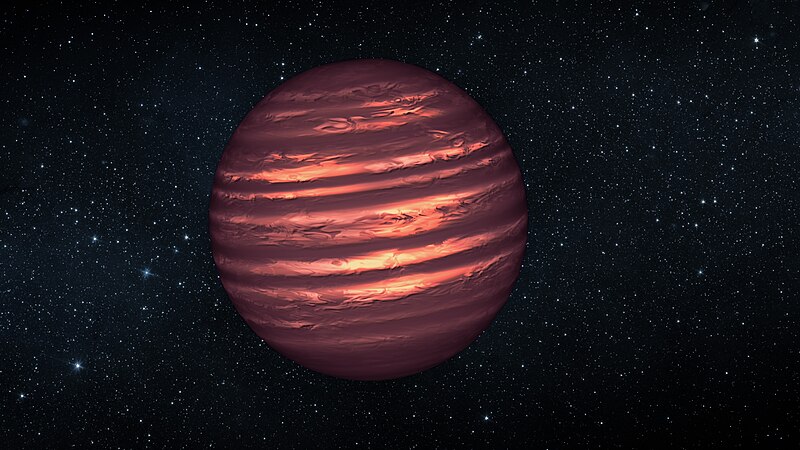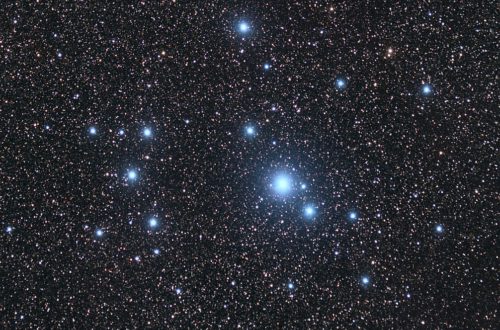Exploring the Mysteries of Brown Dwarf Atmospheres

Exploring the mysteries of brown dwarf atmospheres has been an intriguing area of research for astronomers. With the help of advanced telescopes and spectroscopic techniques, we have gained significant insights into the composition and behavior of these enigmatic atmospheres.
In this article, we delve into the latest discoveries and findings that shed light on the fascinating world of brown dwarf atmospheres.
What is a Brown Dwarf?
Brown dwarfs, also known as failed stars, are substellar objects that are too small to sustain the fusion of ordinary hydrogen that powers regular stars, but too large to be classified as planets. Instead, they emit heat and light from residual energy left over from their formation as well as from fusing deuterium. Some of the more massive brown dwarfs can also can fuse lithium. This limited fusion can only last for at most 10 million years and does not produce enough energy for these objects to shine brightly like other stars. Their atmospheres are shrouded in mystery and scientists are continually working to uncover their secrets.
One of the main areas of focus is the brown dwarf atmosphere, which is vastly different from both stars and planets. By studying these atmospheres, scientists hope to gain a better understanding of the chemical composition and temperature profiles of these objects. Understanding the intricacies of brown dwarf atmospheres can also shed light on larger questions about the formation and evolution of planetary systems.

Uncovering the Secrets of Brown Dwarf Atmospheres
Brown dwarf atmospheres continue to fascinate astronomers and scientists alike. These celestial objects are considered intermediate between planets and stars, and their unique atmospheric properties have been the subject of intense study in recent years.
By observing the light emitted by brown dwarfs, researchers have been able to uncover some of the secrets of their atmospheres. They have discovered that brown dwarf atmospheres are composed of a mixture of gases, including hydrogen, helium, lithium and other molecules such as silicates, sulfides, water, methane, and ammonia. They can form clouds and even rain iron!
By studying the absorption and emission of light from these gases, scientists can determine the temperature and pressure profiles of brown dwarf atmospheres. This information can provide valuable insights into the complex physical and chemical processes that occur in these fascinating objects.
The temperature of these atmospheres varies widely, with some brown dwarfs having temperatures similar to those of the hottest stars, while others are much cooler.
The Role of Gravity in Shaping Brown Dwarf Atmospheres
Gravity plays a crucial role in shaping the atmospheres of brown dwarfs. The intense gravitational force of these objects compresses their gases, resulting in a high density of particles in their atmospheres. This density, in turn, leads to stronger intermolecular bonds and chemical reactions, which can give rise to complex chemical species.
Additionally, gravity affects the temperature structure of brown dwarf atmospheres, resulting in a gradient of temperature and pressure that can drive atmospheric circulation and mixing. Understanding the impact of gravity on brown dwarf atmospheres is therefore essential for deciphering the properties of these intriguing objects, and for predicting their behavior in different contexts.
Conclusion
The study of brown dwarf atmospheres has revealed fascinating insights into the properties of these enigmatic objects. Through thorough investigation of their chemical composition and temperature profiles, as well as the role of gravity in shaping their atmospheres, we have gained a better understanding of the complex processes that govern brown dwarf behavior.
Furthermore, ongoing research is pushing the boundaries of our knowledge, with new technologies enabling us to probe even deeper into the mysteries of these intriguing objects. As we continue to explore the secrets of the brown dwarf atmosphere, we can look forward to even more exciting breakthroughs and a deeper understanding of the cosmos.
Would you like to receive similar articles by email?





